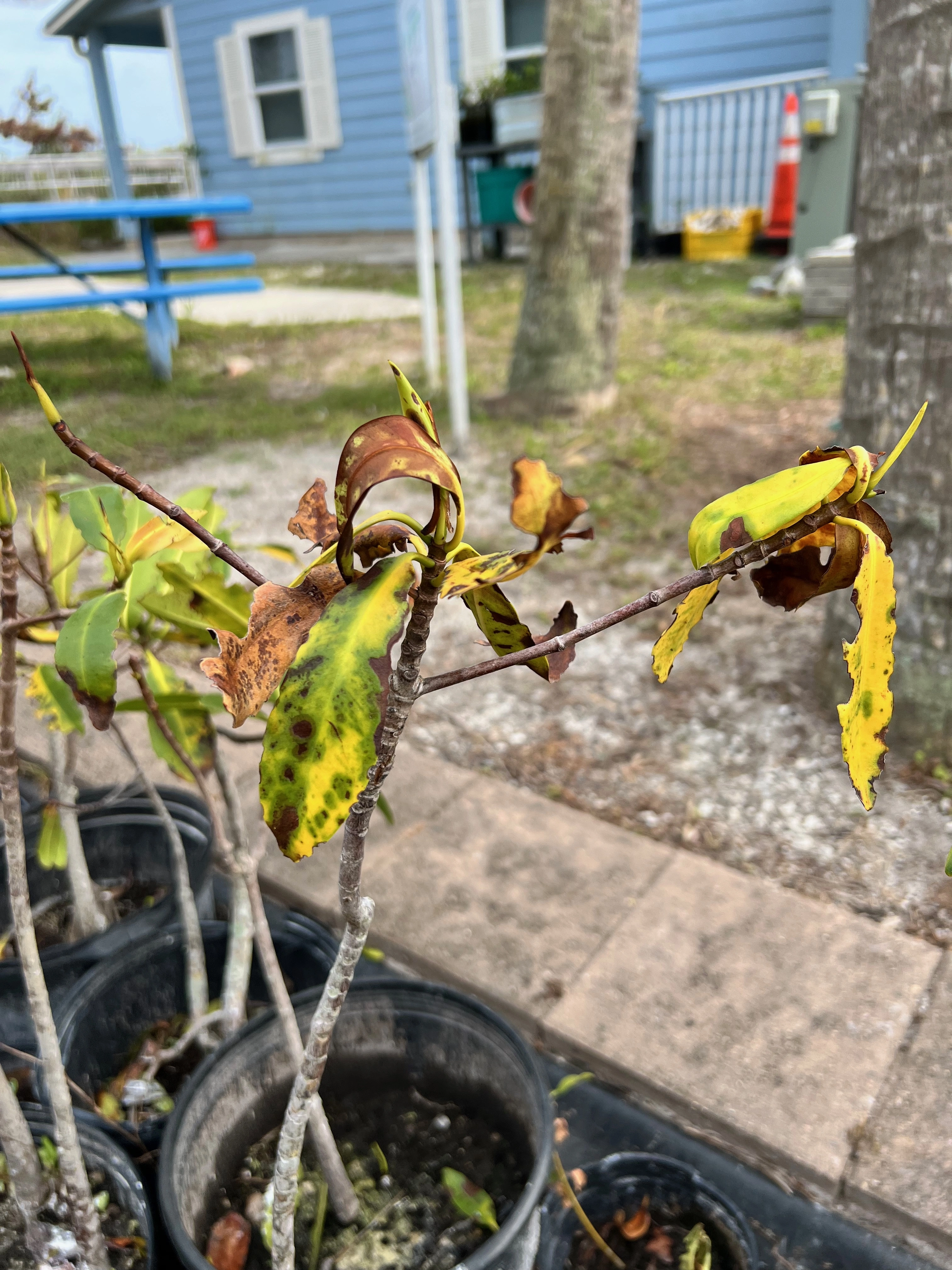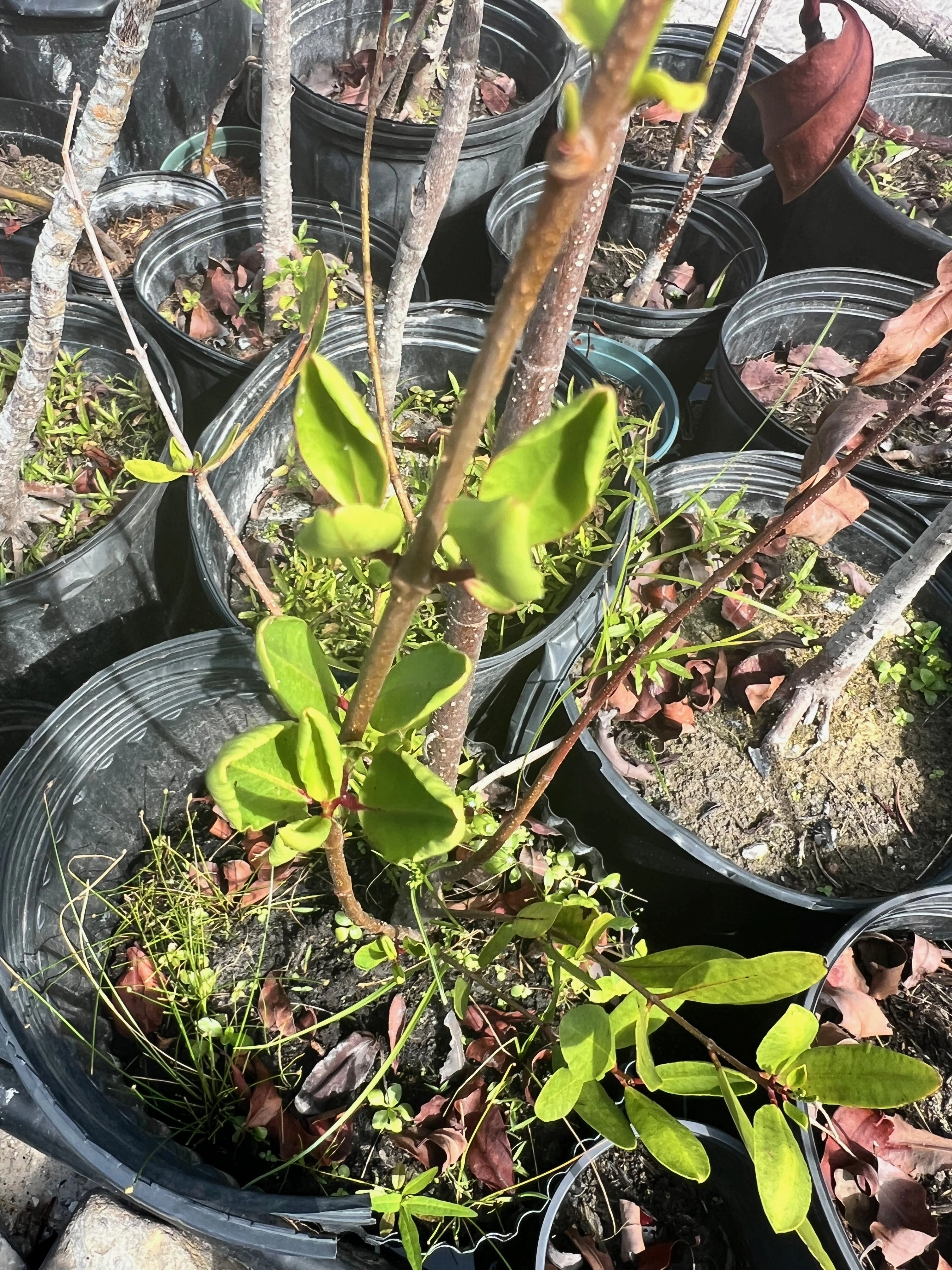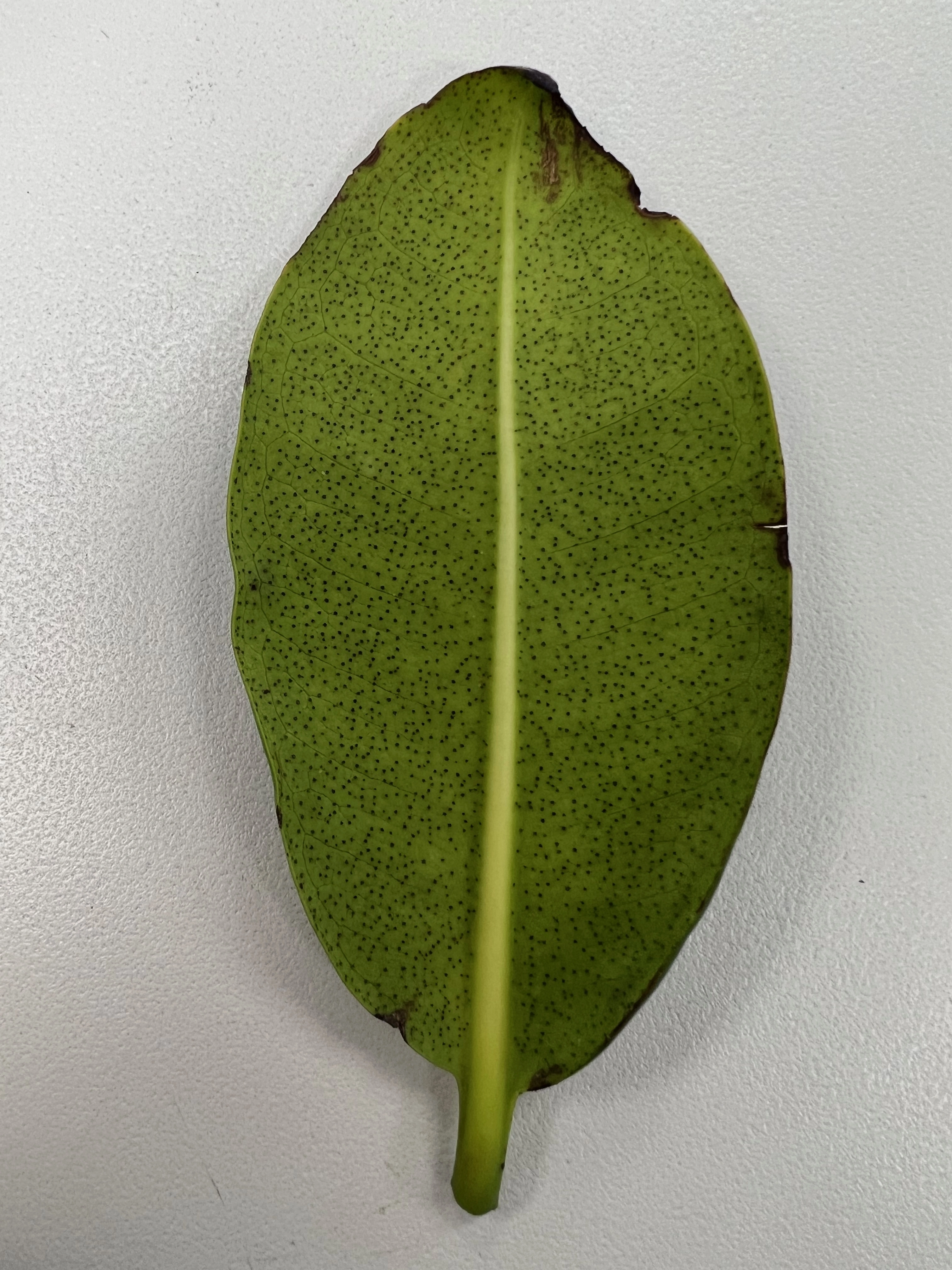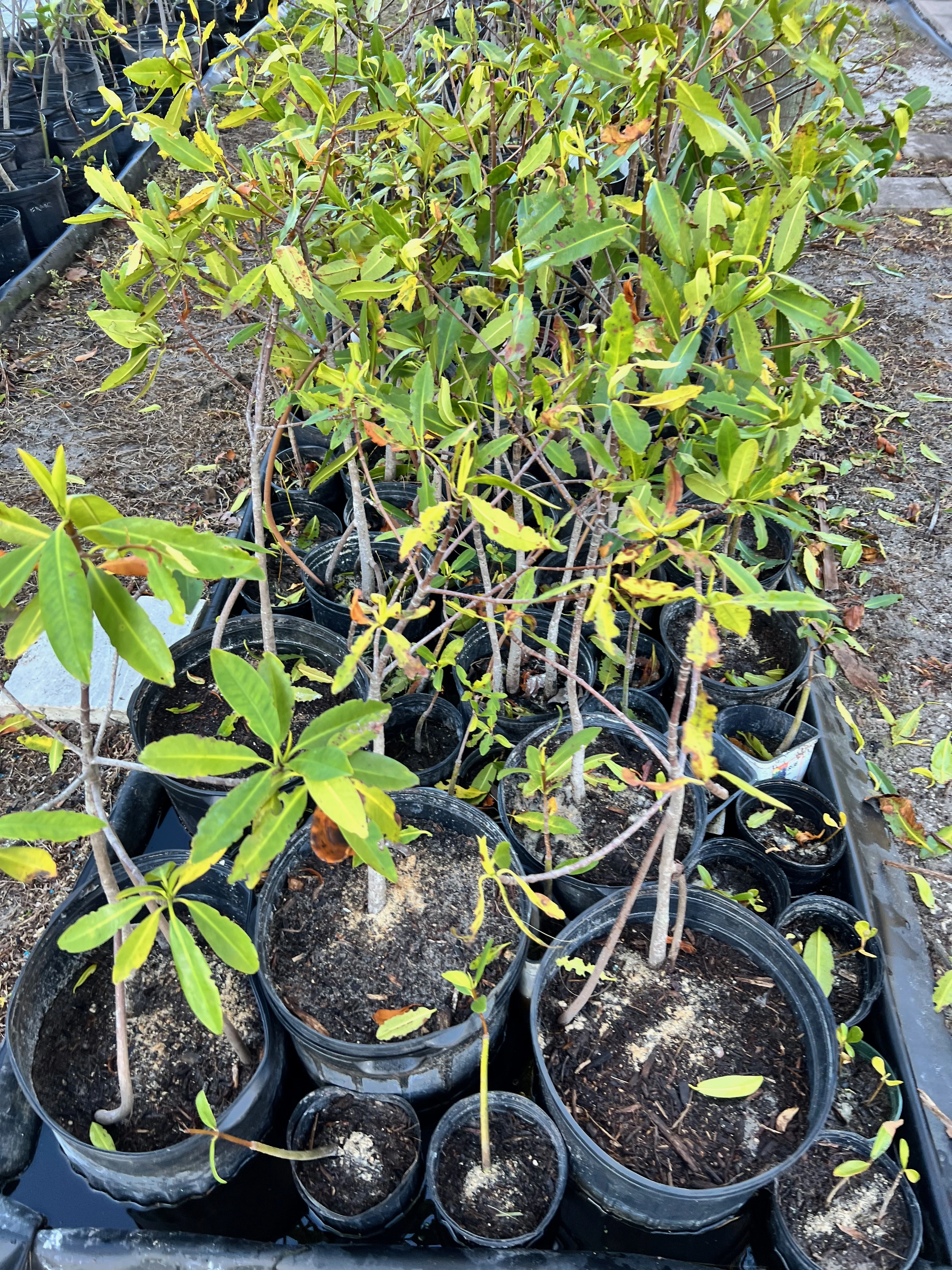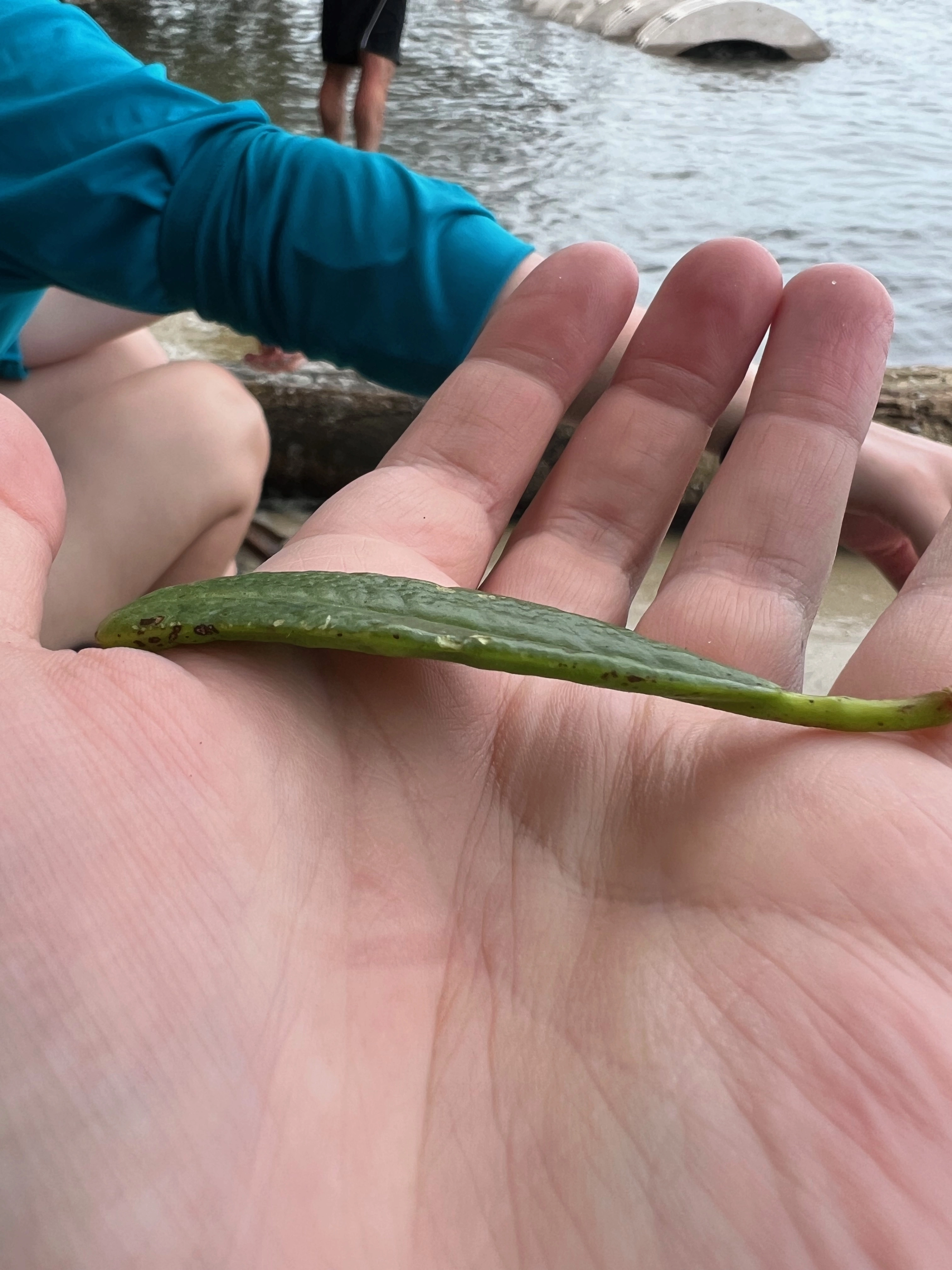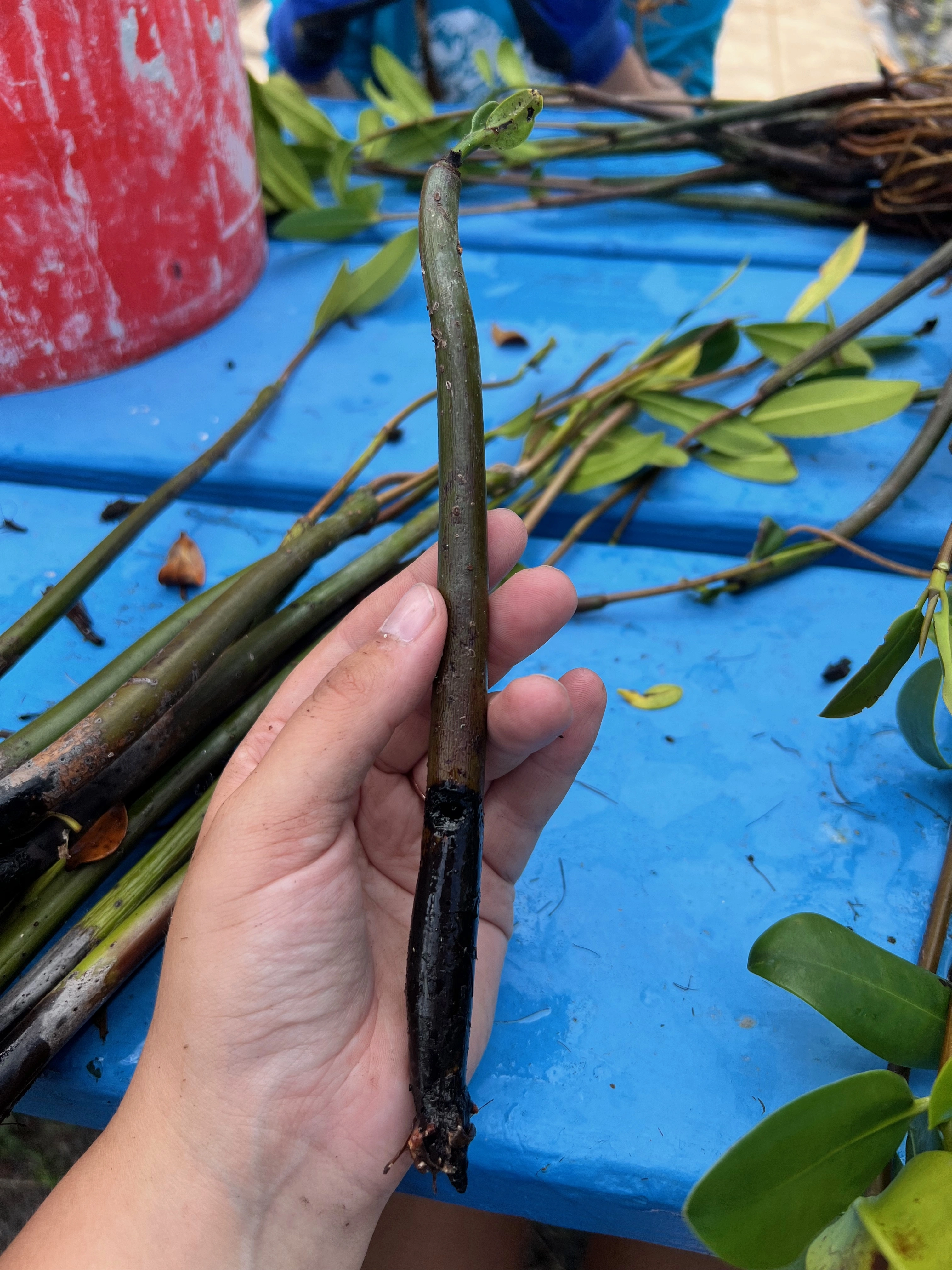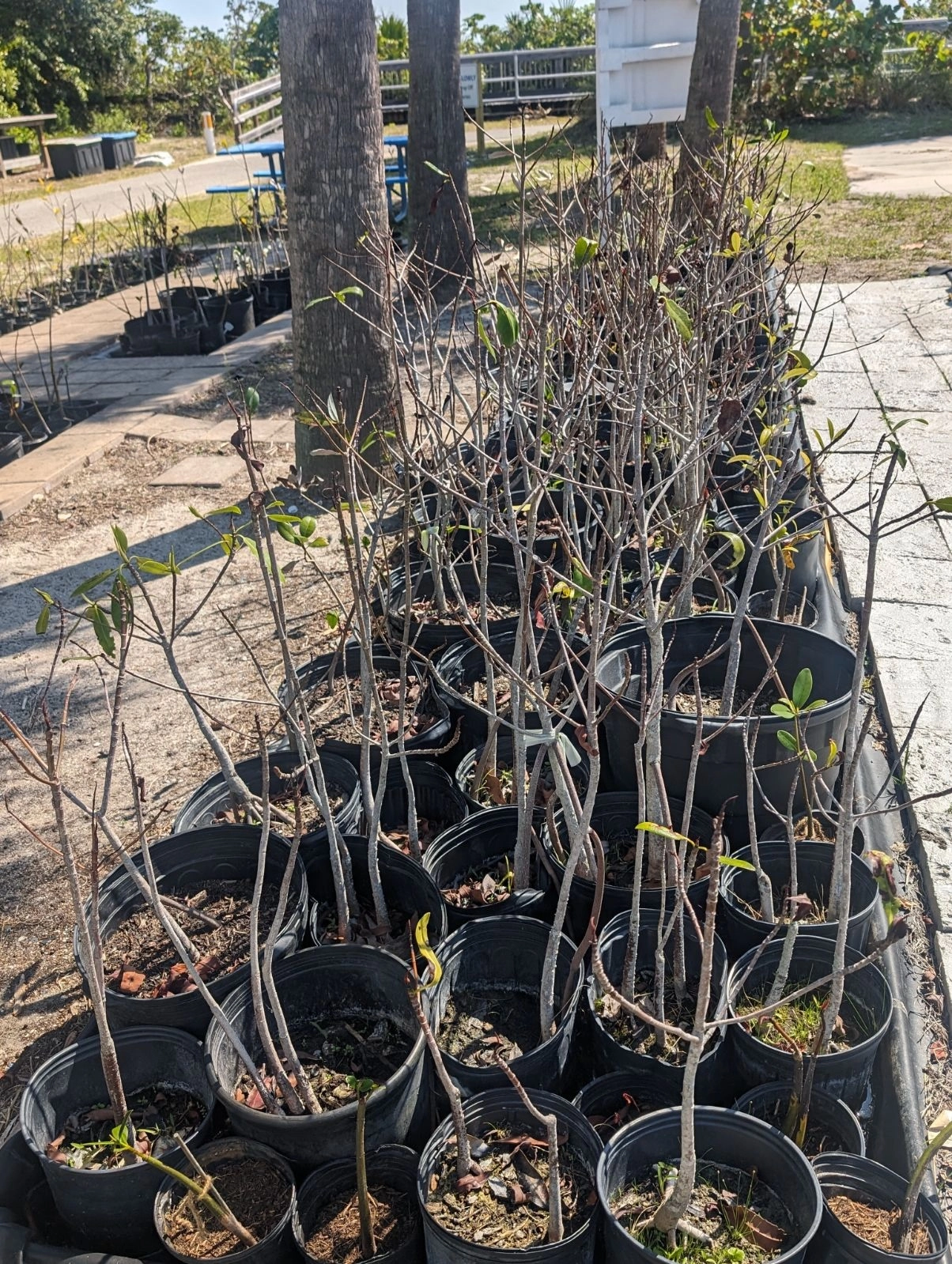Mangrove CNP Overview
Mangroves provide critical habitat for fish and birds and protect our shorelines and coasts. With global climate change, mangroves are experiencing stress at an unprecedented rate. A fungal disease, Mangrove CNP, has been increasingly found in Florida’s mangroves, causing die-off events in mangrove nurseries and the wild. Mangrove CNP is a disease caused by a group of fungal pathogens: Curvularia, Neopestalotiopsis, and Pestalotiopsis. The fungal groups work together to cause disease and death in mangroves.
An example of how Mangrove CNP works in mangroves is chickenpox and shingles in humans. After a human has chickenpox, the chickenpox virus lays dormant in the body. The human immune system can fight off the virus until a stress event occurs. When the body undergoes stress, the chickenpox virus reactivates and causes shingles.
Mangrove CNP is very similar in nature to chicken pox and shingles. More than 80% of wild mangroves sampled by the University of Central Florida (UCF) and the Marine Resources Council (MRC) have tested positive for Mangrove CNP. It is apparent that under normal conditions, mangroves can fight off the fungal disease. However, if the tree experiences a stress event like high temperatures, flooding, transplantation, or storm surge, the fungal disease can become active and cause disease and death. While mangroves have adaptations to tolerate salt water, salt is still toxic to mangroves like other plants. With rising sea levels, mangroves are being flooded more frequently and for more extended periods of time, causing stress. Mangrove CNP can be transmitted easily through the air, water, and by insects.
Mangrove CNP has been noted globally, but no efforts to treat the disease have been made. Die-off events due to Mangrove CNP and other related fungal diseases have been reported in Malaysia, Pakistan, China, Australia, Philippines, Colombia, Vietnam, Thailand, the Bahamas, Puerto Rico, and the US, with the earliest known US report being in Miami, FL, in 2019. As mangroves are critical to shoreline health and coastal protection, a global effort must be made at disease control and treatment.

